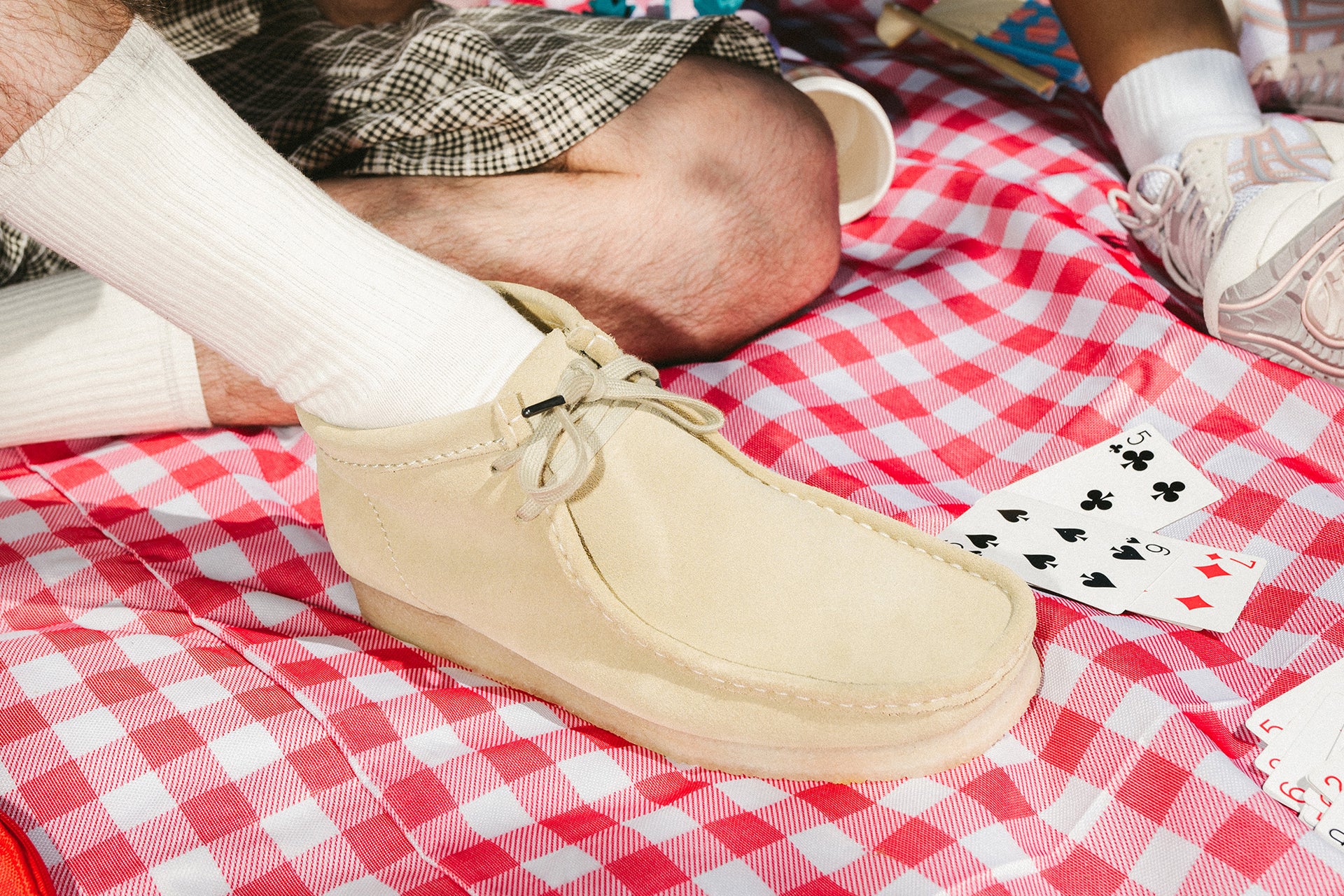The History of Clarks, the internationally renowned name as we know it today, hasn't always repped a footwear-culture enveloping image packed with collaborative Wallabee and Desert Trek efforts on a monthly basis. After all, collaborations are a relatively fresh concept when measured against the brand's 1825 birth year, nearly two centuries ago.
As the story goes, inspiration was spearheaded at the Clark brothers' family-owned tannery - correction, Cyrus Clark's tannery whereby brother, James, was employed. This was a tannery that dealt with a number of comfortable, borderline premium product including sheepskin rugs; have you guessed where this is going yet? Of course not. Cue the brainwave that started it all - "Slippers!".
The History of Clarks
If you're familiar with the manufacturing process behind sheepskin rugs, then you'll be aware that an abundance of off-cuts and 'unlovables' may gather around the tanner's feet. Now, the only thing required was a nifty dose of needle-work and a rigorous development process spanning many years - alas, the sheepskin slipper saw daylight. We consider this as the birth-point of Clarks multi-decade stronghold on casual footwear, an opening chapter in what has become a publication rife with immersive chapters, twists and... suede, naturally. To this day, Clarks' heart remains one with the streets, those in which it was born, grown and adopted by some of the footwear industry's most established trend-setters.
Clarks First Order
Towards the 1800's-1900's adjoined peak, business for Cyrus and James was driving at a rate of knots alongside Britain's economic, colonial and industrial growth. To put it frankly, at this time Britain was nothing short of a hub; a factor mirrored by the Clarks brothers monthly sell-through average toting 1000 pairs without boasting a factory to call their own. An underlying reliance on outworkers meant a lot of slipper production took place at home, those willing to support our siblings now trading under C&J Clark would take patterns and materials away for completion at their own leisure. Friday came around, and each slipper would be exchanged for wages. Could life be any easier? Alas, it would appear that we'd spoken too soon. Recession hit the business in 1863 - saved only by a loan that was paired with one condition, C&J must step down to allow James' youngest son, William, to take the reins. Fortunately, with a fresh direction came vastly modernised manufacturing techniques, namingly the Singer sewing machine; this progressive change ushered the footwear industry's very first shoe designed to fit one's foot-shape perfectly, into the light circa 1883.
Clarks' First Shopfront
From the early 1900's and beyond, trends changed and the word of Clarks spread like wildfire. Science spurred technological advancement to all-new heights, driving cheaper textile alternatives into mass-production for the new-found female Clarks wearer - next came that preliminary printed AD, Clarks' now-famous foot-gauge and the launch of a flagship store on Regent Street to crown 15 new factories. Despite a level of overwhelming success that followed the innovative 'Active Air' in helping Clarks become a household name, growing national costs meant production had to be taken - slowly but surely - overseas.
Clarks in the Modern Day
When moving across-continent, did Clarks' lose the flair that they'd become oh-so-known for? In short, of course not. A vigorous auditing process remains in place to this day, maintaining expected levels of quality control across all fascias of the brand. Did we hear someone label Clarks as the fourth largest footwear company on the planet? We'll leave that one there...
Shop Clarks Originals at TOWER
If you'd like to bag a pair of Clarks Originals for yourself, or simply try a pair on for size - then join us in-store or secure the Clarks Originals selection online today.
Or, simply browse some of the blogs we have online, just waiting to be read! Go on, do it...



